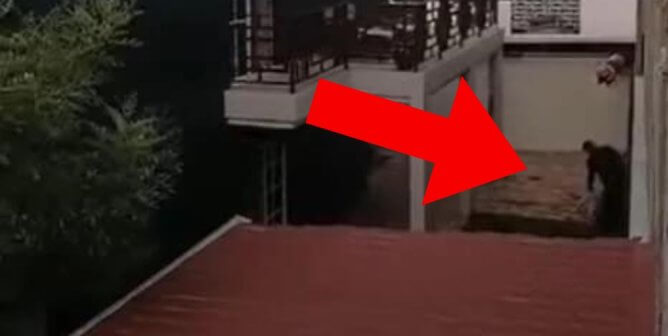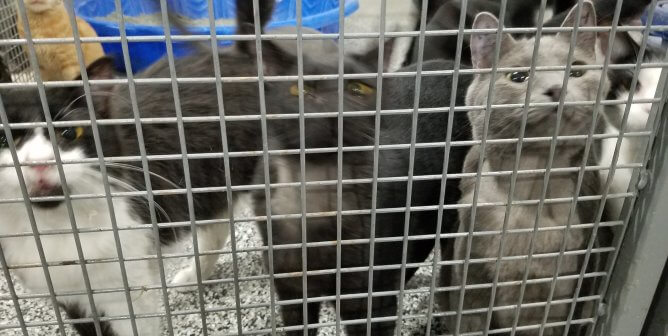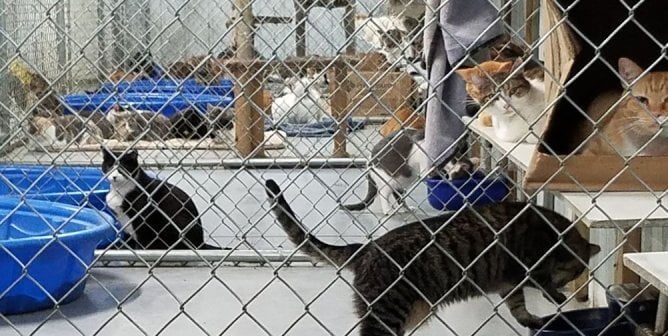Declawing Cats: Manicure or Mutilation?
Cats’ claws and the bones and cartilage that hold them in place allow cats to balance properly, climb, and defend themselves, among other functions. Declawing, which removes these claws, bones, and cartilage, is a painful and permanently crippling procedure that should never be performed. There are effective and humane alternatives to declawing that can prevent cats from inflicting damage with their claws.
Why Do Cats Claw Objects?
Cats claw to have fun and exercise, to maintain the condition of their nails, and to mark their territory—visually and with scent. They stretch by digging their claws in and pulling against their own claw-hold. Cats’ natural instinct to scratch serves both their physical and psychological needs. Before domestication, cats satisfied these needs by clawing tree trunks. Today, domesticated cats can be guided to satisfy their desire to claw without damaging valuable property.
Understanding Declawing
Declawing involves 10 separate, painful amputations. It is a serious surgery, not just a manicure. Declawing a cat involves general anesthesia and amputation of the last joint of each toe, including the bones, not just the nail.1 The following are possible complications of this surgery:
- Adverse reaction to anesthetic
- Gangrene, which can lead to limb amputation
- Hemorrhaging
- Permanent nerve damage
- Persistent pain
- Reluctance to walk
- Scar tissue formation
- Bone fragments
- Skin disorders
After surgery, the nails may grow back inside the paw, causing pain but remaining invisible to observers. Declawing results in a gradual weakening of leg, shoulder, and back muscles, and because of impaired balance caused by the procedure, declawed cats have to relearn to walk, much as a person would after losing his or her toes.
Lasting Difficulties
Without claws, even house-trained cats may urinate and defecate outside the litterbox in an attempt to mark their territory. Declawed cats may be morose, reclusive,and withdrawn or irritable, aggressive, and unpredictable. Many people think that declawed cats are safer around babies, but in fact, the lack of claws, a cat’s first line of defense, makes many cats feel so insecure that they tend to bite more often as a means of self-protection.2 A study published in the Journal of Feline Medicine and Surgery reported that, based on the animals observed, declawed cats are up to 7 times more likely to have at least one behavioral problem and 3 times more likely to have back pain than those cats who are left intact.3 Declawed cats are also more likely to be surrendered to shelters.4
Banned by Countries and Cities and Condemned by Vets
Nearly two dozen countries—including England, Australia, and Japan—ban or severely restrict declawing surgeries.5 In the U.S., declawing is prohibited in the cities of Los Angeles, San Francisco, Santa Monica, Berkeley, Beverly Hills, Culver City, West Hollywood and Burbank.6 In 2017, Denver, Colorado became the first city outside of California to ban the practice.7 New York lawmakers voted in 2019 for that state to become the first in the nation to ban the procedure.8
Many vets refuse to perform the surgery. Dr. Jennifer Conrad wrote in JAVMA that “[r]outine declawing (unlike sterilization) is never performed for the sake of the animal” and that as a veterinarian, she has “an obligation to do what is best for the animals and not what is most convenient for their owners.”9 Dr. Patty Khuly does not perform declawing surgeries at her Florida clinic, asking other veterinarians, “If we agree it’s our moral responsibility to uphold the welfare of animals under our care….doesn’t it run counter to this belief that we inflict pain for the preservation of our clients’ furniture?”10
Compassionate Alternatives
With a little effort and patience, you can protect your furnishings and preserve your cat’s claws at the same time. The following hints will help:
- Trim your cat’s nails regularly. When the cat is relaxed and unafraid, gently press on the toes until the claws extend. Use a pair of nail clippers and cut only the tip of the nail, taking care not to damage the vein or “quick.” The nail hook is what tears upholstery, so removing it virtually eliminates damage.
- Buy or build two or more scratching posts. They must be sturdy, tall enough to allow the cat to stretch (3 feet or taller), and properly placed. Bark-covered logs, posts covered with sisal, or posts covered with tightly woven burlap work well. Soft, fluffy, carpeted scratching posts don’t work—they are one of the greatest causes of declawing because cats don’t like the posts, and frustrated human companions resort to surgery. If you use carpet, secure it to the posts with the rough backing on the outside; soft carpeting will not satisfy a cat’s need to claw. Place one scratching post where your cat is already clawing and another near the area where he or she normally sleeps (cats like to stretch and scratch when they first wake up).
- Consider cardboard or sisal “scratching boxes” that lie flat on the floor. These are inexpensive and small enough to scatter around the house, allowing your cat easy access to an “approved” scratching spot at all times. They do wear out fairly quickly, however, and will need to be replaced every few months—otherwise, cats may get frustrated and revert to using furniture.
- Teach your cat where to claw and where not to claw. Place your cat on the new scratching post and move his or her paws, or pretend to scratch it yourself. This will scent the posts and encourage exploratory clawing. Make the post a “fun” place to be. Play games with your cat on and around the post, and attach hanging strings, balls, and/or bouncy wire toys to it. Try sprinkling catnip on the post, too. (A once-a-week or so refresher application will keep your cat interested.) When kitty uses the post, reinforce this behavior with praise, but be careful not to startle or frighten him or her. When your cat claws furniture, discourage this behavior with a firm voice or other loud noise, but never with physical force. Directing lukewarm water from a squirt gun at the animal’s back is often successful. During the training period, you may need to cover upholstery with plastic or other protection (cats don’t like the slippery feel and will quickly learn to stay away).
References
1American Veterinary Medical Association, “Literature Review on the Welfare Implications of Declawing of Domestic Cats,” 16 Feb. 2016.
2Michael Fox, “Declawed Cats Can Resort to Biting,” The Washington Post,” 17 Aug. 2006.
3SAGE, “Declawing Linked To Aggression And Other Abnormal Behaviors in Cats,” ScienceDaily 23 May 2017.
4G.J. Patronek et al., “Risk Factors for Relinquishment of Cats to an Animal Shelter,” Journal of the American Veterinary Medical Association, 209 (1996): 582-588.
5Christianne Schelling, D.V.M., Declawing.com, last accessed 24 Mar. 2019.
6Katie Dangerfield, “Cat Declawing Ban Spreads Across The U.S. But It’s Still Allowed in Canada,” Global News, 18 Nov. 2017.
7Krystyna Biassou and Kristen Aguirre, “Cat Declawing Ban Passes Unanimously in Denver,” 9News.com, 14 Nov. 2017.
8Jesse McKinley, “Cat Declawing Ban Is Passed by N.Y. Lawmakers,” The New York Times 4 June 2019.
9Jennifer Conrad, D.V.M., letter, Journal of the American Veterinary Medical Association, 223 (2003): 40-1.
10 Dr. Patty Khuly, “Outlaw the Declaw? One Veterinarian Weighs In,” Embrace Pet Insurance, accessed 24 Mar. 2019.







